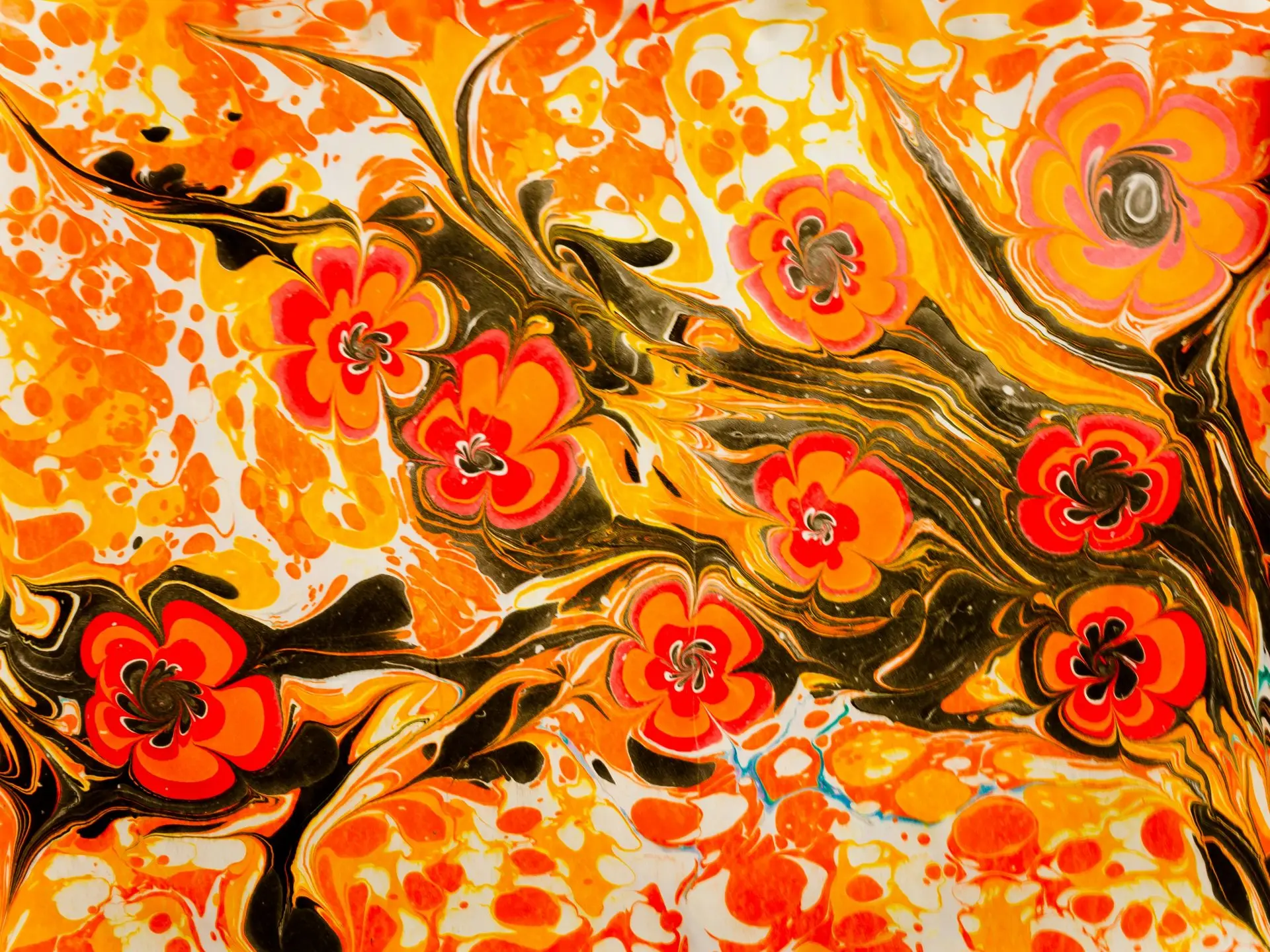The Cave Paintings of Lascaux: Early Human Art

Looking for more amazing products? Check out our online store and explore our collection here! Happy shopping!
Before diving in, please note: This post is for informational purposes only. If you’d like to know more about how we approach topics, feel free to check out our friendly Disclaimer Page.
Hey there, amazing readers! 
We’re committed to delivering quality posts, and your support (even just sticking around despite the ads) means everything to us. So, bear with us, and thanks for helping us keep the good vibes rolling. Now, on to the fun stuff!
TRANSLATE BUTTON AT THE END OF THE ARTICLE
A Quick Overview
The Lascaux Cave Paintings are an awe-inspiring collection of prehistoric artwork discovered in southwestern France.
These captivating images, etched into the stone walls of the cave, offer a glimpse into the lives and thoughts of early humans.
They depict a variety of animals, human figures, and abstract symbols, giving us valuable insight into the cultural and social dynamics of our ancestors.
Let’s embark on a journey to explore the incredible world of Lascaux, diving into its history, artistry, and significance.
The Fascinating World of Lascaux Cave Paintings
Imagine stepping into a dimly lit cavern, your footsteps echoing against ancient stone as you come across stunning images that have captivated visitors for millennia.
That’s what the Lascaux Cave experience is like.
Located near the village of Montignac, these paintings date back to around 17,000 years ago, during the Upper Paleolithic period.
The cave complex stretches over 2,000 meters and contains over 600 paintings.
Each artwork tells a story — stories of survival, culture, and humanity.
The majority of the images portray animals, reflecting the deep connection our ancestors had with their environment.
The sheer scale of the artwork is mind-boggling.
Some animals, like the powerful aurochs, are depicted in majestic poses, while others, like deer and horses, exhibit dynamic movement.
The artists utilized the natural contours of the cave walls, making the creatures appear almost lifelike.
Researchers believe that these paintings could have served various purposes, from ritualistic significance to simply marking territory.
Whatever the reasons, it’s clear that the Lascaux Paintings represent one of the earliest forms of human expression.
It’s a marvel that they have survived through the ages, whispering stories of a bygone era.
Discovering the Hidden Gem of Prehistoric Art
How did these masterpieces escape the ravages of time?
The Lascaux Cave was discovered in 1940 by a group of teenagers exploring the area.
Little did they realize that they had stumbled upon one of the most significant archaeological finds of the 20th century.
After the initial discovery, the cave was opened to the public in 1948, quickly attracting thousands of visitors eager to see the artwork.
However, the influx of people posed a threat to the delicate ecosystem of the cave.
Within a few years, the humidity and carbon dioxide from human breath began to degrade the paintings, leading to a temporary closure in 1963.
Fortunately, this closure allowed researchers to study the cave in greater detail, leading to discoveries about the techniques used and the materials chosen by the artists.
The findings revealed that the artists likely used natural pigments made from minerals and charcoal, mixed with animal fat or plant-based binders.
Subsequently, replicas of the cave were created, allowing art enthusiasts and curious minds to appreciate this art without causing further damage to the originals.
The most notable of these replicas is Lascaux II, opened in 1983, which faithfully recreates the most famous sections of the cave.
A Journey Back in Time: Lascaux’s Origins
To truly appreciate the Lascaux Paintings, we need to step back in time and consider the people who created them.
These artists lived in a world vastly different from ours.
They were hunter-gatherers, relying heavily on their understanding of animal behavior and the environment to survive.
The Upper Paleolithic period was a time of significant change.
Climate shifts were occurring, and animals previously hunted began to migrate.
The Lascaux artists were likely responding to these changes, documenting their environment and experiences through art.
The cave paintings are believed to have formed part of a larger ritualistic practice.
Some researchers suggest they might have been used in hunting ceremonies, where artists depicted the animals they sought to attract.
What’s fascinating is that these creators had a profound understanding of their medium.
They didn’t just slap paint on rocks; they thought deeply about color, texture, and form.
The artists displayed remarkable skill, evident in the realistic proportions and details of the animals.
These paintings are a remarkable testament to human creativity, showcasing an emotional and spiritual connection with the natural world.
Through their art, these early humans sought to communicate a shared experience, leaving a legacy that spans millennia.
What Makes Lascaux Paintings So Special?
What makes Lascaux so different from other cave art?
For starters, the sheer number of paintings and their complexity is staggering.
While other caves contain artwork, Lascaux is unparalleled in its level of detail and diversity.
The paintings also highlight the innovative spirit of these early artists.
The use of perspective and motion in the depictions of animals shows a sophisticated understanding of art that many might not associate with prehistoric peoples.
Additionally, the paintings offer a glimpse into the thoughts and beliefs of our ancestors.
The selection of animals and accompanying symbols can provide insights into their values, fears, and aspirations.
The Lascaux Paintings also challenge the notion of human development.
They suggest that artistic expression emerged much earlier than we once thought.
These cave painters were not just simple people; they were complex beings with a rich inner life and a desire to communicate.
On an emotional level, the paintings evoke a sense of wonder.
Standing before them, one can’t help but feel a connection with the past, as if reaching across the ages to touch the thoughts of those who came before us.
It’s a powerful reminder of our shared humanity.
The Vibrant Colors and Techniques of Ancient Artists
Now let’s talk about the colors!
The vibrancy of the Lascaux Paintings is astonishing, given their age.
The artists employed natural pigments, creating a palette that included reds, yellows, and blacks.
These colors were made from ochre, charcoal, and other minerals ground into powders.
The application methods varied.
Some artists used their fingers or brushes made from animal hair, while others likely blew pigments through hollow bones to create a spray-like effect.
This technique adds depth and texture to the artwork.
The use of the cave’s natural contours also played a significant role in the artistry.
The painters took advantage of the uneven surface, allowing them to create a three-dimensional effect.
This skillful manipulation of the medium showcases the artists’ deep understanding of their craft.
Interestingly, some researchers believe that the location of paintings within the cave may have held symbolic significance.
Specific areas could have been designated for certain themes or rituals, reinforcing the idea that art was intertwined with their spiritual beliefs.
In short, the techniques and materials used by the Lascaux artists highlight an impressive level of sophistication that challenges our perceptions of prehistoric life.
They were not just artists; they were innovators, thinkers, and storytellers.
The Iconic Animals of Lascaux: A Closer Look
The Lascaux Paintings feature an astonishing array of animals, each with its own story and significance.
Let’s take a closer look at some of the iconic figures that grace the cave walls.
Aurochs: These massive wild cattle are one of the most frequently depicted animals.
Their strength and size made them a formidable presence in the prehistoric landscape.
Horses: The horses in Lascaux are often portrayed in dynamic positions, showcasing their grace and speed.
They might symbolize freedom or serve as a representation of the artists’ aspirations.
Deer: These gentle creatures are depicted in various poses, perhaps reflecting their importance as a food source for early humans.
Bison: The bison, with its robust body, reinforces the idea of survival.
These animals were a crucial part of the early human diet.
Wild Goats: Often seen on steep cliffs, these agile animals may have represented the challenges of hunting in rugged terrains.
Each animal carries its own narrative, and their portrayal suggests they were more than mere subjects; they embodied the connection between humans and nature.
The vibrancy, movement, and detail captured lend a sense of life to these ancient images.
Decoding the Meaning Behind the Cave Art
What did these paintings mean to the people who created them?
The meanings of the Lascaux Paintings continue to intrigue researchers and enthusiasts alike.
While we may never fully understand their significance, various theories offer fascinating insights.
One prominent theory suggests that the artworks were part of a ritualistic practice aimed at ensuring a successful hunt.
The act of painting could have been a way to invoke protection or guidance from the spirits of the animals depicted.
Another interpretation points to a storytelling aspect.
The paintings could represent mythologies or cultural narratives integral to the community’s identity.
They might have served as a visual record of shared experiences, passed down through generations.
Some researchers see the images as a form of early communication, a way for our ancestors to convey messages about their environment.
This perspective frames the paintings as a storytelling medium, bridging the gap between generations.
Moreover, the choice of animals depicted may also indicate a deep spiritual connection.
The creators might have viewed these animals not just as prey but as partners in their existence, deserving of reverence and respect.
While we can only speculate about their meanings, the Lascaux Paintings remind us of the complexity of early human thought.
They invite us to ponder how much we share with those who walked the Earth thousands of years before us.
How Lascaux Paintings Changed Our Understanding of History
The discovery of the Lascaux Cave has had profound implications for our understanding of human history.
These paintings are among the earliest known examples of artistic expression, pushing back the timeline of creativity.
Before Lascaux, scholars often viewed prehistoric humans as simple beings focused solely on survival.
The cave paintings revealed a more sophisticated culture rich in symbolism and artistic achievement.
The artworks challenge the notion that art and culture emerged only after settling into agricultural lifestyles.
Instead, they suggest that creativity flourished within hunter-gatherer societies, indicating that the desire to communicate and express oneself is an intrinsic part of being human.
Furthermore, the Lascaux Paintings have influenced various fields of study, from anthropology to psychology.
They have sparked debates about the cognitive abilities of early humans and how they perceived their world.
In popular culture, Lascaux has become a symbol of prehistoric creativity, captivating the imaginations of artists, writers, and filmmakers.
Its influence can be seen in countless works, reinforcing the idea that art transcends time and connects us all.
In essence, the Lascaux Paintings serve as a powerful reminder that our past is not as distant as we might think.
They bridge the gap between ancient and modern human experiences, inviting us to reflect on our shared journey.
The Discovery of Lascaux: A Serendipitous Find
The story of how Lascaux was discovered is as fascinating as the artwork itself.
In September 1940, four teenagers — Marcel Ravidat, Jacques Marsal, Georges Agnel, and Simon Coencas — were exploring the countryside when they stumbled upon a hidden entrance to the cave.
Curiosity piqued, they ventured inside and were met with breathtaking scenes on the walls.
Initially, they weren’t quite sure of the significance of what they found, but word quickly spread.
Local authorities and archaeologists became involved, leading to the cave’s formal recognition as a site of immense historical importance.
On its discovery, Lascaux was opened to the public, and visitors flocked to see the stunning artwork.
Unfortunately, the high volume of visitors soon became problematic.
The delicate balance of the cave’s ecosystem began to deteriorate, prompting closures to preserve the art.
Today, Lascaux remains a point of fascination.
Its discovery not only unveiled a treasure trove of prehistoric art but also highlighted the responsibilities we have as stewards of cultural heritage.
Preserving Lascaux: Challenges and Innovations
As much as we cherish the Lascaux Paintings, preserving them poses significant challenges.
Environmental factors, human interference, and the natural aging of materials all threaten the integrity of these ancient artworks.
In response, conservation efforts have been implemented to strike a balance between public access and preservation.
After closing the original cave, scientists introduced controlled conditions to study the impacts of humidity, temperature, and light on the paintings.
The creation of replicas, like Lascaux II, has allowed visitors to experience the beauty of the art without endangering the originals.
Technological advancements in imaging and analysis have further enriched our understanding of the cave and its masterpieces.
Innovative approaches, like virtual reality experiences, are also emerging.
These allow people to explore the cave from anywhere in the world, making the art accessible while ensuring the original remains protected.
Ultimately, the story of Lascaux’s preservation is one of respect, innovation, and dedication.
It underscores the importance of safeguarding our shared cultural heritage for future generations.
Visiting Lascaux: Tips for an Enriching Experience
If you’re lucky enough to visit Lascaux, prepare for an unforgettable adventure!
Here are some tips to enhance your experience:
Plan Ahead: Given the popularity of the site, consider booking your tickets in advance.
This way, you can secure your spot and avoid long queues.
Choose the Right Time: Early morning or late afternoon visits can provide a more serene experience.
Plus, the lighting can create a magical ambiance.
Join a Guided Tour: Knowledgeable guides can offer insights and stories that enrich your understanding of the paintings and their significance.
Engage Your Senses: While viewing the paintings, take a moment to soak in the atmosphere.
Imagine what it was like for the artists who created this extraordinary work.
Respect the Space: Remember that you’re walking in the footsteps of our ancestors.
Treat the cave with reverence, following all guidelines provided by the site.
Explore the Surrounding Area: Montignac and its surroundings are beautiful, with plenty to see and do.
Don’t miss out on the charming village and its local cuisine.
Visiting Lascaux is more than just a trip to see ancient art; it’s a deeply immersive experience that connects you with the very essence of what it means to be human.
Celebrating Early Human Creativity Through Lascaux Art
In the end, the Lascaux Paintings stand as a testament to early human creativity and resilience.
They remind us that our ancestors were not just survivalists; they were thinkers, artists, and storytellers.
These artworks reflect the diversity of human experience, capturing moments of joy, struggle, and connection to the natural world.
They encourage us to ponder our place within the continuum of history and the shared journey of humanity.
By exploring the Lascaux Paintings, we celebrate the spirit of creativity that has defined us as a species.
They invite us to reflect on the importance of art, expression, and the stories that connect us all.
Conclusion
The Lascaux Cave Paintings are not just relics of the past; they are windows into the human soul.
Through vibrant colors, dynamic forms, and intricate details, they weave together a tapestry of our shared heritage.
From their serendipitous discovery to ongoing preservation efforts, the story of Lascaux reminds us of the power of creativity.
It encourages us to embrace our innate desire to express, connect, and understand.
As we admire these ancient artworks, let’s celebrate the enduring legacy of early human creativity and honor the stories that continue to resonate through time.
Whether you’re an art lover, a history buff, or simply curious about our past, Lascaux offers a captivating glimpse into what it means to be human.

The Enlightenment Journey is a remarkable collection of writings authored by a distinguished group of experts in the fields of spirituality, new age, and esoteric knowledge.
This anthology features a diverse assembly of well-experienced authors who bring their profound insights and credible perspectives to the forefront.
Each contributor possesses a wealth of knowledge and wisdom, making them authorities in their respective domains.
Together, they offer readers a transformative journey into the realms of spiritual growth, self-discovery, and esoteric enlightenment.
The Enlightenment Journey is a testament to the collective expertise of these luminaries, providing readers with a rich tapestry of ideas and information to illuminate their spiritual path.
Our Diverse Expertise
While our primary focus is on spirituality and esotericism, we are equally passionate about exploring a wide range of other topics and niches 

To ensure we provide the most accurate and valuable insights, we collaborate with trusted experts in their respective domains 
Our blog originally focused on spirituality and metaphysics, but we’ve since expanded to cover a wide range of niches. Don’t worry—we continue to publish a lot of articles on spirituality! Frequently visit our blog to explore our diverse content and stay tuned for more insightful reads.
Hey there, amazing reader! 
Check out our store here and take a peek at some of our featured products below! Thanks for being awesome!













